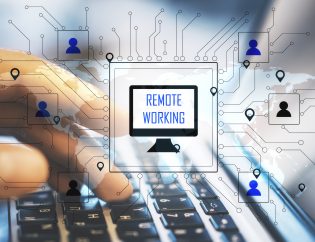After you hire a new employee, the onboarding process is the most crucial step in ensuring that the employee will perform well and stick around to grow your company’s success.
New hire onboarding can be a long process with many steps, so many employers tend to rush the process, especially if they are pressed to fill productive positions quickly. However, skipping steps can have significant negative impacts on the new employee’s performance and may even lead to frustrations that cause the new hire to quit.
An onboarding checklist will help managers and HR professionals ensure that every step in the onboarding process is covered so that new hires are set up for success. We’ve provided some background for why an onboarding checklist is important and how you can create one for your business
The Importance of a New Hire Onboarding Checklist
A new hire onboarding checklist is important because it will help your team stay organized. There are a lot of elements and paperwork that go into the entire onboarding process and you need to make sure that all of your bases are covered. A checklist provides a structure and time management so your team can check off each step when it is complete to ensure that the new hire is on track and ready to begin their role.
According to studies by LinkedIn, employee satisfaction or Employee Experience (EX) is directly linked to a company’s success. More and more companies are investing in successful EX practices like a positive onboarding experience. The study shows that 77% of talent professionals say that EX is important for increasing employee retention and 71% believe EX will increase employee productivity.
Another LinkedIn study shows that 31% percent of people quit their new job within the first six months citing “different work than expected” as one of the top reasons for leaving. This happens when the job description or onboarding program is inconsistent with the actual responsibilities of the role. Poor job descriptions may be one of the top reasons you’re losing candidates while a well-written, clear, and accurate job description is one of the best ways to attract top talent.
To avoid losing freshly hired employees, you should make sure that the job description accurately explains the responsibilities of the role and then carry that consistency into your new employee onboarding process.
An onboarding checklist will make sure that every step of training is covered for a positive onboarding experience that will lead to increased productivity and decreased employee turnover.
How to Create an Onboarding Checklist
You can use a tool like Excel or Google Docs to create an onboarding checklist. Break up the checklist by the types of tasks that need to be completed and create a checklist for each week of onboarding. You can also find an employee onboarding template online, but make sure you adjust it to fit the role and your unique company.
Many onboarding processes begin with human resources paperwork, tax forms, an employee handbook review, and an introduction to the company in the first week and then ease into new tasks and responsibilities for the following four weeks. A 90-day onboarding plan is a very common practice, but the length of your onboarding process depends on the role and your company policies. In any case, your checklist should be broken up by the week or even by the day to be thorough.
As many companies prioritize digital transformation, HR automation software has become more prevalent to ease the onboarding process. This software offers tools like E-signatures, automated workflows, and document storage in an online onboarding portal that makes the process faster, simpler, and more organized. When using HR automation software, most of the paperwork can be checked off of a built-in list, but other elements of onboarding like training procedures will have to be recorded by onboarding managers, supervisors, or training personnel in a separate checklist.
How you set up and format your new employee onboarding process is up to you and your individual company, but you should always maintain a consistent structure that is easy to follow. This will ensure organization and guarantee that every step is covered for employee success.
What Should Be On Your Onboarding Checklist
Every company’s new hire onboarding experience will look different. The remote onboarding process is becoming more and more common, but here are some things that should be on your onboarding checklist regardless of your specific situation:
- Prepare Your Team for Onboarding Employees– Before the new hires even start, you should prepare the team for the new hires’ arrival. When coworkers and team members are aware of onboarding employees, they can make sure to welcome them and create a friendly company culture for a positive experience on both ends.
- Send a Welcome Email- Before the new employee’s first day, you should send them an email welcoming them to the company and outlining the schedule for the first day and week. You can also include a couple of documents like the employee handbook and benefits package outline. This email will get the employee excited for their first day and you will ease a bit of their natural anxiety by preparing them with expectations, dress code, and a schedule.
- Employee Orientation- On the employee’s first day you should begin onboarding with an orientation that welcomes them to the company and gives them some background on the company mission, broader company culture, business owners’ history, and the role responsibilities. This is also the perfect time to introduce key supervisors, HR advisors, coworkers, and the management team.
- Paperwork- New employees will likely have a good amount of paperwork like hire forms, tax forms, and other additional employment form requirements, so make sure they know everything that needs to be signed and sent back. Set deadlines and have a member of HR walk them through the checklist.
- Give a Tour- Environment is a crucial part of Employee Experience (EX), so you should make sure that you give new employees a full tour when they start. When new employees are aware of their surroundings, they will feel more comfortable and ready to work. Even if your onboarding process is remote, you should make sure you provide videos or virtual explanations for how to use the necessary employee portals.
- Job Training- Proper job training is a huge part of the onboarding experience and this element may be broken up into different steps on the onboarding checklist. Depending on the employee’s experience and the nature of the role, the training period can last anywhere from a week to a month or longer. The most productive employees receive proper training in essential tasks so they don’t waste time trying to figure things out by themselves later on.
- Assign a Buddy- A mentorship or onboarding buddy program is very beneficial to a new employee’s training. Chose current employees in the same role who make great teachers and mentors so the new hire will have someone to look up to and ask questions when they are stuck.
- Schedule Regular Check-Ins- The last element on your new employee onboarding checklist should be to schedule regular check-ins with your new hires throughout the onboarding process and after. Many companies use a quarterly check model for regular feedback and an annual performance review. Choose the meeting agenda that is right for your company and the role then set up times to meet about job satisfaction, answer questions, and review the employee’s job performance.
A solid new employee onboarding checklist will keep your team organized and ensure a smooth onboarding process that will guarantee retention and high productivity.
Hiring the right employees will also make the onboarding process easier and a staffing agency like FirstPRO can help. Read our blog about Why Recruiting is the Most Important Business Strategy and check out our Recruitment Services to learn more.
Contact Us today to hire top talent for a positive onboarding experience and lasting new employees.









